Exploding with tart goodness and just the right medley of aromatic spices, this Indian pickle is a refreshing way to kick Indian dishes up a notch. This recipe is an instant amla pickle, meaning you do not have to wait for long fermentation times. It’s not too fussy to make at all.

Amla is one of Ayurveda’s most prized fruits. It’s one of the highest natural sources of vitamin C, antioxidants, and other essential nutrients. These precious green super-food wonders are known for their immune-boosting properties, promoting overall well-being, which is why amla plays a central role in Triphala, Chaywanprash, and other tridoshic Ayurvedic compounds. When transformed into a delectable pickle, their zesty and sour notes awaken the senses and bring a bite of intense flavor to any meal.
I fell deeply in love with Indian pickles on my first of many trips to India over twenty years ago. It’s no wonder why my blog has recipes for some of my favey Indian pickles: Mango pickle, Carrot pickle, Green Chili pickle, and this Amla pickle. I had stopped at the foot of Chamundi Hill in Mysore at a tiny vegetarian restaurant for lunch. When I ordered the Thali, I didn’t know what half the items were on the plate, but when I took a bite of the amla pickle, my mind was 100% blown. The flavor was so intense, and it really brought the whole meal together. It wasn’t until my second or third time in India that I realized what it was I had eaten.
With its roots dating back to the Vedic period, pickles have graced the tables of countless households. Each region, even each home has its own recipe and style. Among the vast array of pickles that adorn Indian kitchens, Amla ka Achar has unique medicinal and digestive properties. Indian gooseberries, also known as amla, are revered for their incredible health benefits and exquisite taste. What’s horribly sad? That fresh amlaki are not available widely outside of India. I was so thrilled to see them available at my local Indian market in New Jersey, that I had to jump on the opportunity to share this amla pickle recipe with ya!
So, tie on your most adorable apron, gather the ingredients, and let the pickling extravaganza begin.
Jump to:
🥰Why you are going to adore the ever-loving heck outta this recipe
✊Vegan AF: Rest assured, no animals are involved in the making of this tangy delight, making it the perfect choice for those seeking compassionate culinary adventures.
🪷 Suddha Sattva: This pickle is sattvic and ekadasi-friendly, containing no onions, garlic, grains, or non-veg ingredients. The pickle is suitable for bhoga offerings, so you may serve it as prasadam.
😻Quick as a Cat: This is a great “quick pickle,” meaning it requires no long fermentation time. After just ten minutes of steaming, the amla fruit is ready to be mixed with the other ingredients and can be ready for dinner the same day you make it! If you want to save even more time you can use my recipe for pickle masala, and then an amla pickle is even faster to throw together.
✅Tested and Approved Worldwide: Like all of the recipes on my blog, this Amla ka Achar has undergone meticulous testing and tweaking to achieve perfection. In addition to my own testing, a dedicated team of recipe testers, hailing from kitchens worldwide, have given their stamp of approval. No matter where you are, with varying ingredient brands and gear, this pickle recipe will not disappoint and make your family leave you.
🤔 What is Amla?
The Amla plant (Emblica officinalis) is a medium-sized deciduous tree native to the Indian subcontinent. It belongs to the family Phyllanthaceae and is well-known for its small, round, greenish-yellow fruits, which are the prized Indian gooseberries or Amlaki.
Fresh Amla is abundant in India, Nepal, Bangladesh, and Sri Lanka. These tart and juicy fruits grace local markets and bazaars during the harvest season, which typically falls in late summer to early autumn.
🕉️ The Ayurvedic Wonder of Amla
In Ayurveda (Ahuḥ= life/lifespan, veda= science/body of knowledge) India's ancient system of medicine, Amla has held a prominent place as a medicinal herb for thousands of years. Revered as a potent Rasayana (rejuvenator), Amla is believed to balance all three doshas - Vata, Pitta, and Kapha. Its sour taste is thought to stimulate the digestive fire jatarāgni), enhancing metabolism and promoting better assimilation of nutrients. Amla is also celebrated for its cooling properties, helping to pacify excess heat in the body. Traditionally, Amla has been used to support the immune system, promote healthy skin and hair, and improve overall vitality.
In recent times, modern scientific research has delved into the medicinal properties of Amla, further validating its incredible benefits. Studies have highlighted Amla's extremely high vitamin C content, showcasing its potent antioxidant properties that help combat oxidative stress and free radicals. Additionally, Amla has shown promise in supporting cardiovascular health by promoting healthy blood lipid levels and maintaining blood pressure within the normal range. Its anti-inflammatory effects have also garnered attention, making it a valuable player in managing inflammatory conditions.
🌶️ Notable ingredients and substitutions
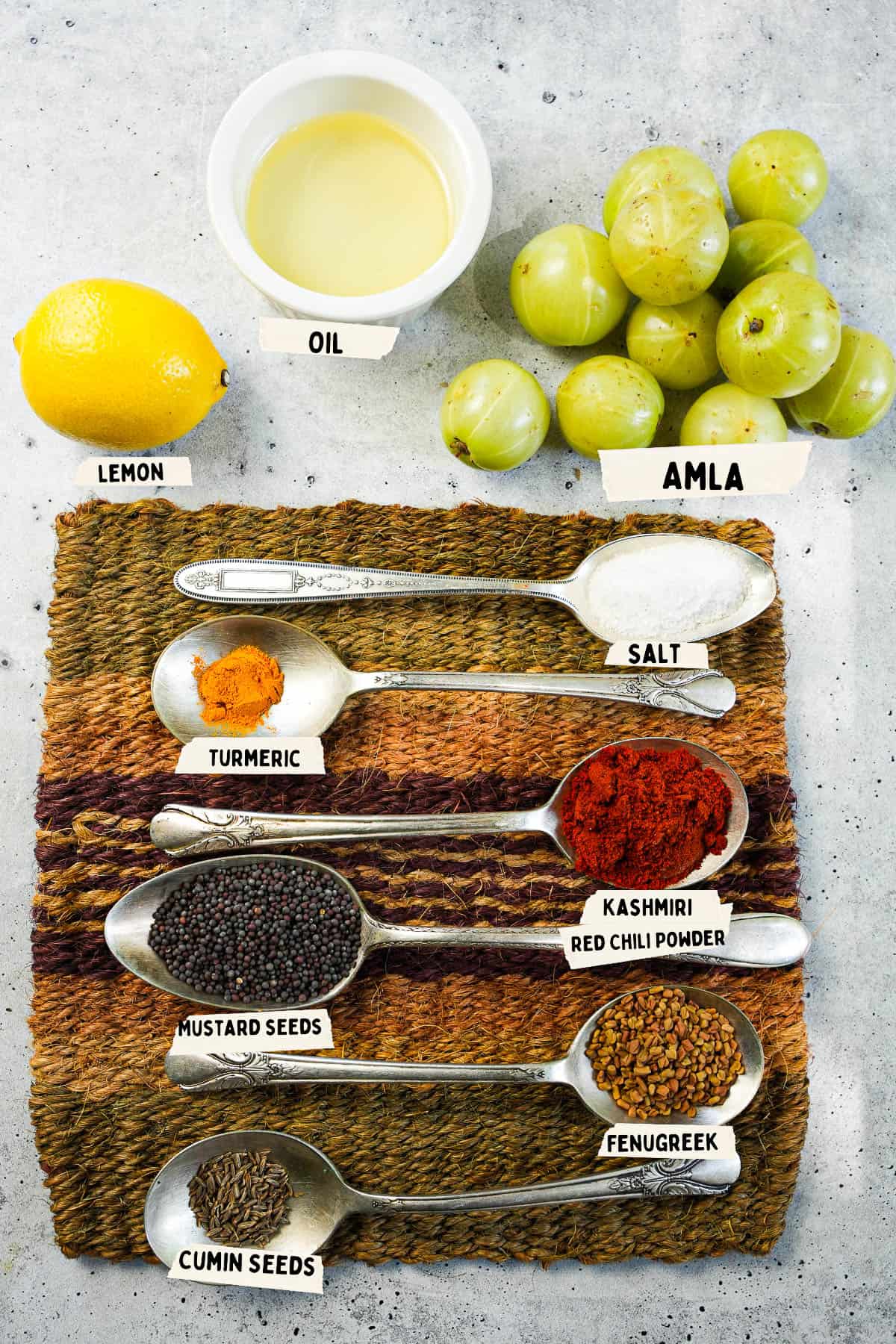
Fresh Amla fruits
As the star ingredient, Amla's vibrant green color and juicy texture infuses the pickle with a burst of refreshing citrusy taste. You can even make a pretty lovely amla candy with it. If fresh Amla is not available, you can use frozen Amla, providing you thaw and drain it before steaming. Thawed frozen amla will not need to be steamed for longer than 5 minutes if the seeds have already been removed. You don’t want the pickle to be mushy and lifeless!
Fenugreek Seeds (Methi Dana)
Fenugreek seeds bring a distinct nutty flavor and aroma to the pickle. These tiny golden-brown seeds are known to aid digestion and regulate blood sugar levels. In case you don't have fenugreek seeds, a pinch of fenugreek powder works fine in place of the seeds, since you will be grinding the toasted seeds into a powder in the recipe anyway.
Mustard Seeds (Sarso/Sarson Ka Beej)
Mustard seeds, with their pungent taste, are a classic element in Indian pickling. They are rich in minerals, such as selenium and magnesium, and are known for their anti-inflammatory properties. You may use black, brown, or yellow mustard seeds in this recipe. I use the brown ones, because it’s what I usually have on hand, but I have always loved the way pickles look made with the yellow seeds. Anyway, you do you, as the kids say these days…
Turmeric (Haldi)
It ain't just for making turmeric rice yellow, ok? Turmeric powder, with its warm golden hue, contains curcumin, a compound with powerful anti-inflammatory, anti-microbial and antioxidant properties. For a substitute, you can use freshly grated turmeric root in place of the powder.
Oil
Oil plays a vital role in pickling, as it acts as a preservative and carries the flavors of the spices. Olive oil or other neutral oils like sunflower or grapeseed oil work well in this recipe. Some people make their pickles with sesame oil, but I feel like its flavor is too dominant for a sensitive fruit like amla. To make the recipe oil-free, you can use water or a mix of vinegar and water instead, though the pickle will have a shorter shelf life.
For the longest pickle shelf life, you may use mustard oil (aka Aava Nune) which has been brought to the smoking point and then cooled. Make sure to use food-grade mustard oil. Refined mustard oil has undergone a pasteurization process that reduces erucic acid levels, making it safer for consumption.
📖 How to make amla pickle
Imagine walking through a forest of spices holding onto the hand of a giant amla fruit with arms and legs. Your amla friend can show you the way to pickle-paradise. We've got some fresh amla (about 10-12 fruits, depending on the size), and we're gonna turn them into a flavor bomb! So, buckle up gosh darnit, and let's get picklin'!
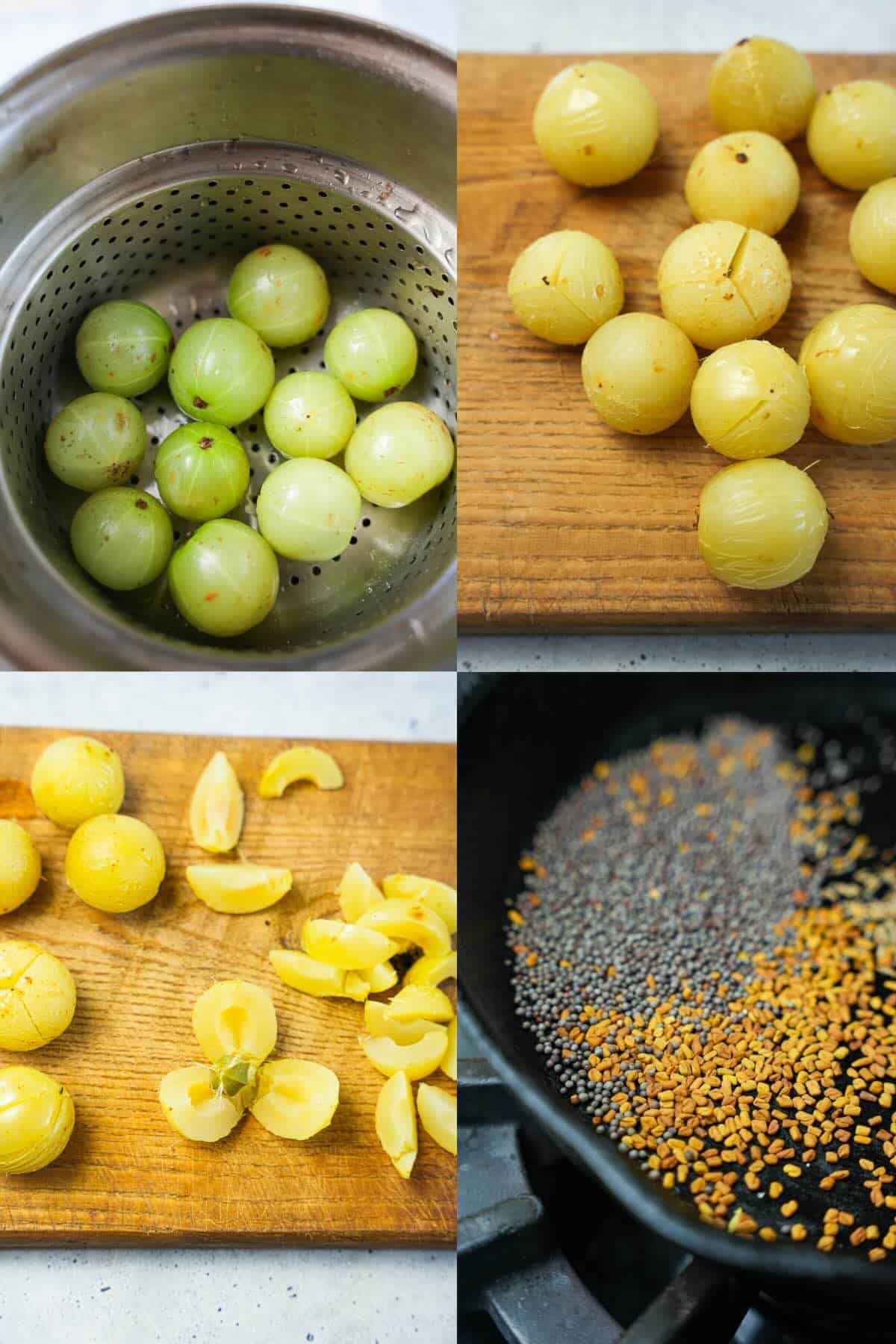
Step 1
Rinse off and place the whole amla fruits into a steamer for 10 minutes over medium heat. You can alternatively boil them for 8 minutes until they're soft.
Step 2
You know the amla is properly steamed when some of the fruits start splitting open at their seams.
Step 3
Once they've cooled down, split ‘the fruits into six sections each, and say goodbye to those pesky seeds. Cool looking as they are, they gotta go! ✌️ Byeeeee
Step 4
In a dry pan over medium heat, toast the mustard seeds, cumin seeds, and fenugreek seeds, stirring periodically for about 4 minutes. The kitchen's gonna smell ah-mazing!
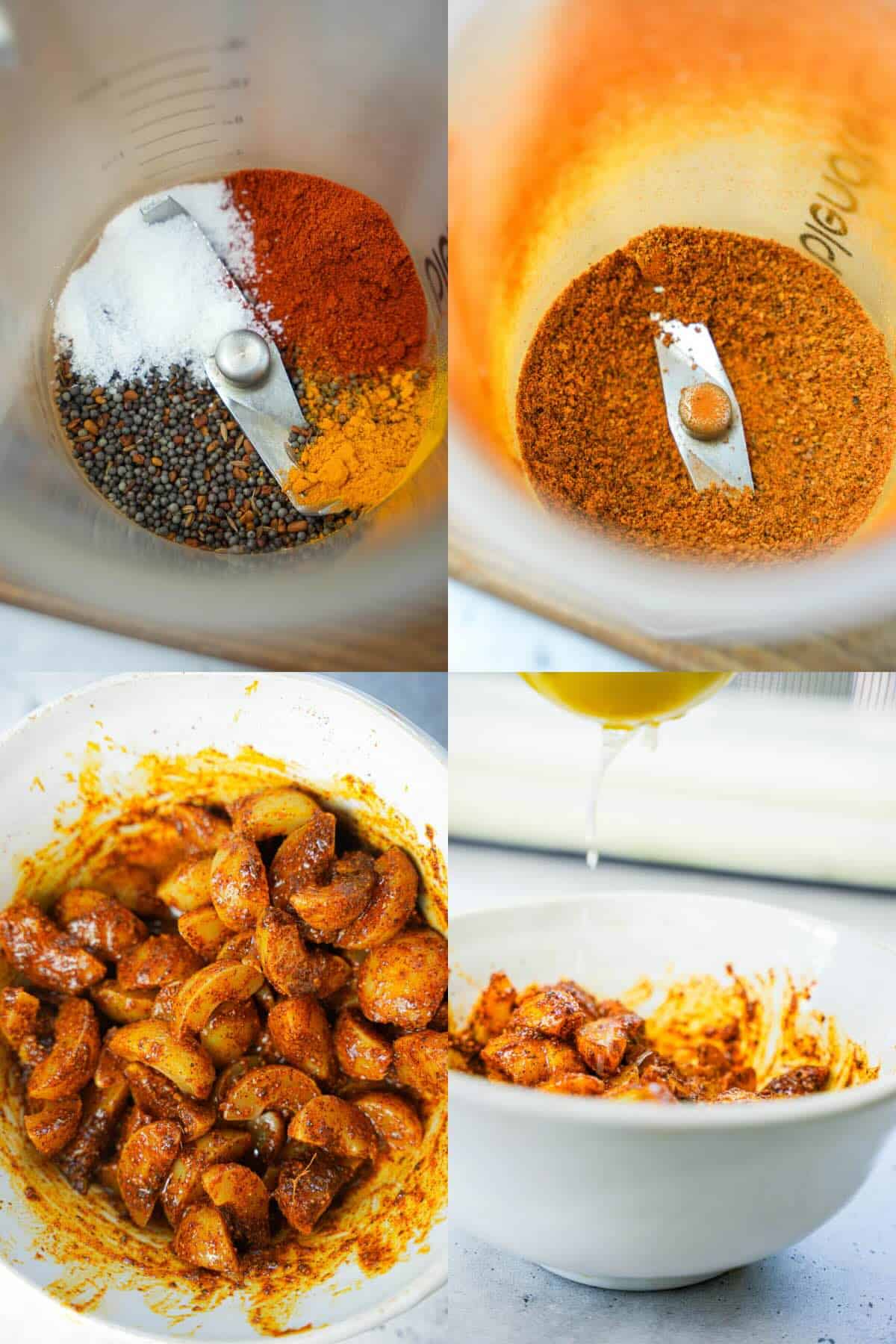
Step 5
After the seeds cool for a few minutes, place them into a spice grinder, blender, or mortar and pestle along with the Kashmiri red chili powder, turmeric powder and salt.
Step 6
Grind into a coarse powder.
You can adjust the chili powder to your heat preference. If you really like it super-spicy, now is a good time to add some fresh hair mirch chilies.
Step 7
Grab a big bowl and toss the tender amla sections with the spice blend. Now, pour in the oil (olive, canola, sunflower, or peanut oil) and mix together until well combined.
Step 8
Squeeze fresh lemon juice all over the spiced amla.
Squeeze fresh lemon juice all over the spiced amla.
👉 If the pickle is sourer than you can deal with, add a pinch of sugar to balance out the tartness.
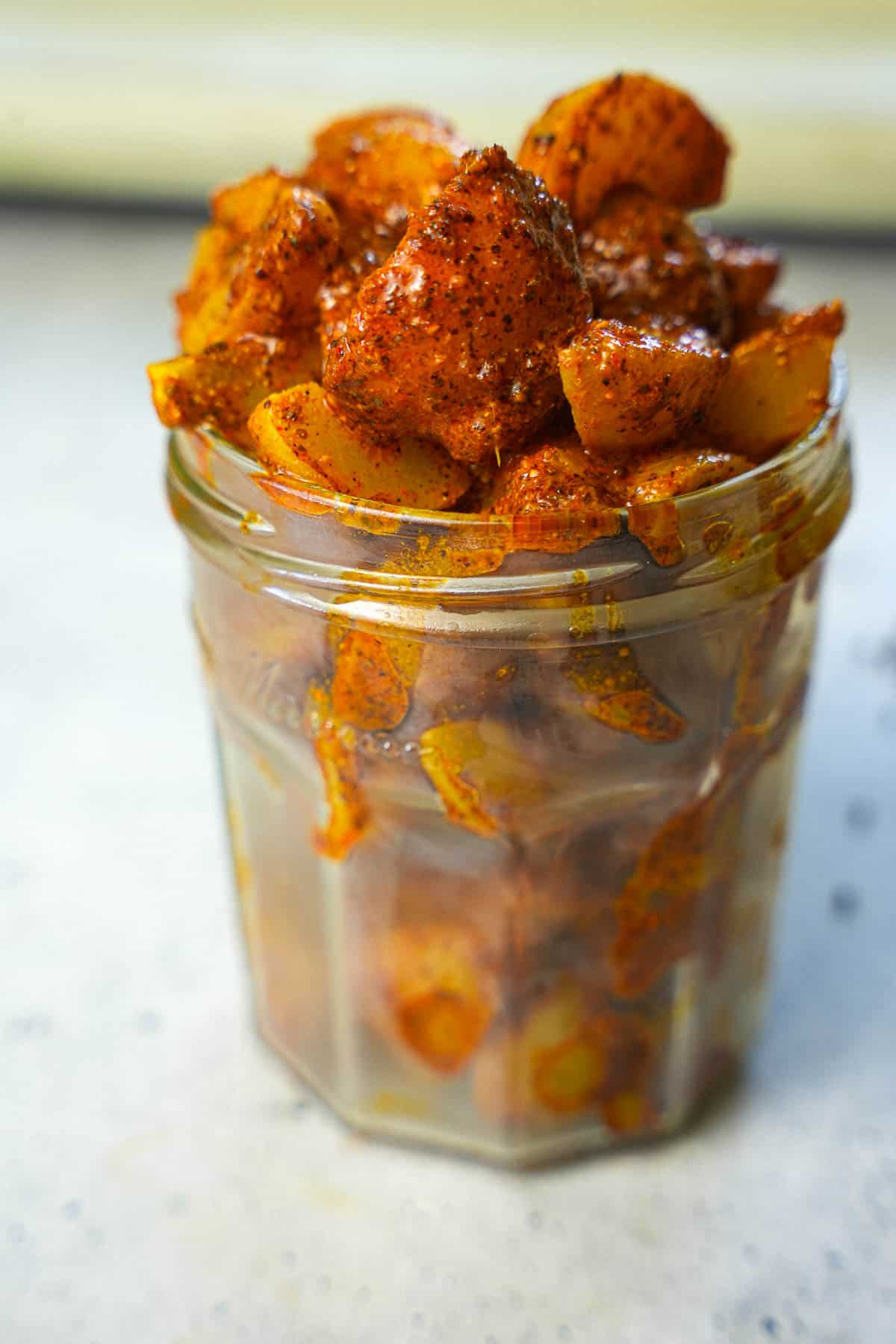
Step 9
Pack the pickle into a sterilized glass jar. Place the jar in the refrigerator and use the pickle up within two months. The longer you wait, the better it gets! Always use a clean, dry metal spoon or fork for taking out pickle from the jar so you do not introduce bacteria or moisture which can cause the amla pickle to go bad. Any sign of mold forming, or unpleasant fragrance, you should just err on the safe side and chuck it.
💡What to serve amla pickle with
Amla achar is the perfect accompaniment to a variety of dishes, elevating your meal to a whole new level. The following dishes are super-yummers dot com:
Chaats:
Pair Amla ka Achar with hot and crispy bhajis, vadai, or sweet potato and pomegranate chaat and try it with masala phool makhana, complementing the crunchy, spiced lotus seeds with the pickle's vibrant flavors.
Sabjis:
Turn your everyday sabjis from a snooze-fest to a “woo-hoo-fest!” by serving them with Amla pickle. Make the pickle alongside bhindi (okra), saag aloo (spinach and potatoes), peerkagai kootu (ridge gourd stew), arbi sabji (made with small taro roots), lauki sabji (bottle gourd), olan (a coconut-based vegetable stew, perfect for Sadhya), or classic Punjabi Chana Masala. Try it with phool makhana subji, veggie-packed aviyal (a recipe dating back to the Mahabharata), and even my vegan butter chicken (it’s made with my plant-based seitan chicken).
Rice and dal
Complement the comforting goodness of dals with our spiced Amla pickle. Serve it alongside arhar dal (split pigeon pea dal), or sattvic red lentil dahl. Serve your pickle and dal over a bed of fragrant coconut rice, veg. Biryani, or if you are sick and tired of rice, over a bed of lightly spiced Turkish bulgur pilaf.
Breads
Amritsari kulcha or Kerala parotta are the perfect delivery systems for pickle and curry to face.

👉Top tips
1. Select Fresh and Ripe Amla:
Choose fresh and ripe amla fruits for the pickle. Look for ones that are firm, smooth, and free from any blemishes. Ripe amla tends to have a brighter color and a sweeter taste, enhancing the overall flavor of the pickle.
2. Make it your own:
Feel free to experiment with the spice blend to suit your taste preferences. Adjust the amount of Kashmiri red chili powder or add other spices like fennel seeds, thinly sliced green chilies (hard mirch), ajwain (karom seeds), or nigella seeds to tailor the pickle to your liking. Just remember, a little extra spice can go a long way, so start with small quantities and taste as you go.
3. Salt to taste
Salt acts as a natural preservative, so the more salt, the better the pickle lasts. Of course, you don’t want it to be unpleasantly salty. The amount I call for in the recipe is very palatable, but if you intend to hold onto the pickle for ages, you may want to add additional salt.
4. Proper storage is key 🔑
Only use sterilized and dried glass jars to store your pickle. Refrigerate it promptly to maintain freshness and prevent mold growth. Remember to always use clean and dry metal spoons to scoop out the pickle to prevent contamination. You can optionally add an extra layer of plain oil on top of the pickle in the jar to act as a barrier between the air and amla which helps to keep it safe from mold.
🤷♀️FAQ
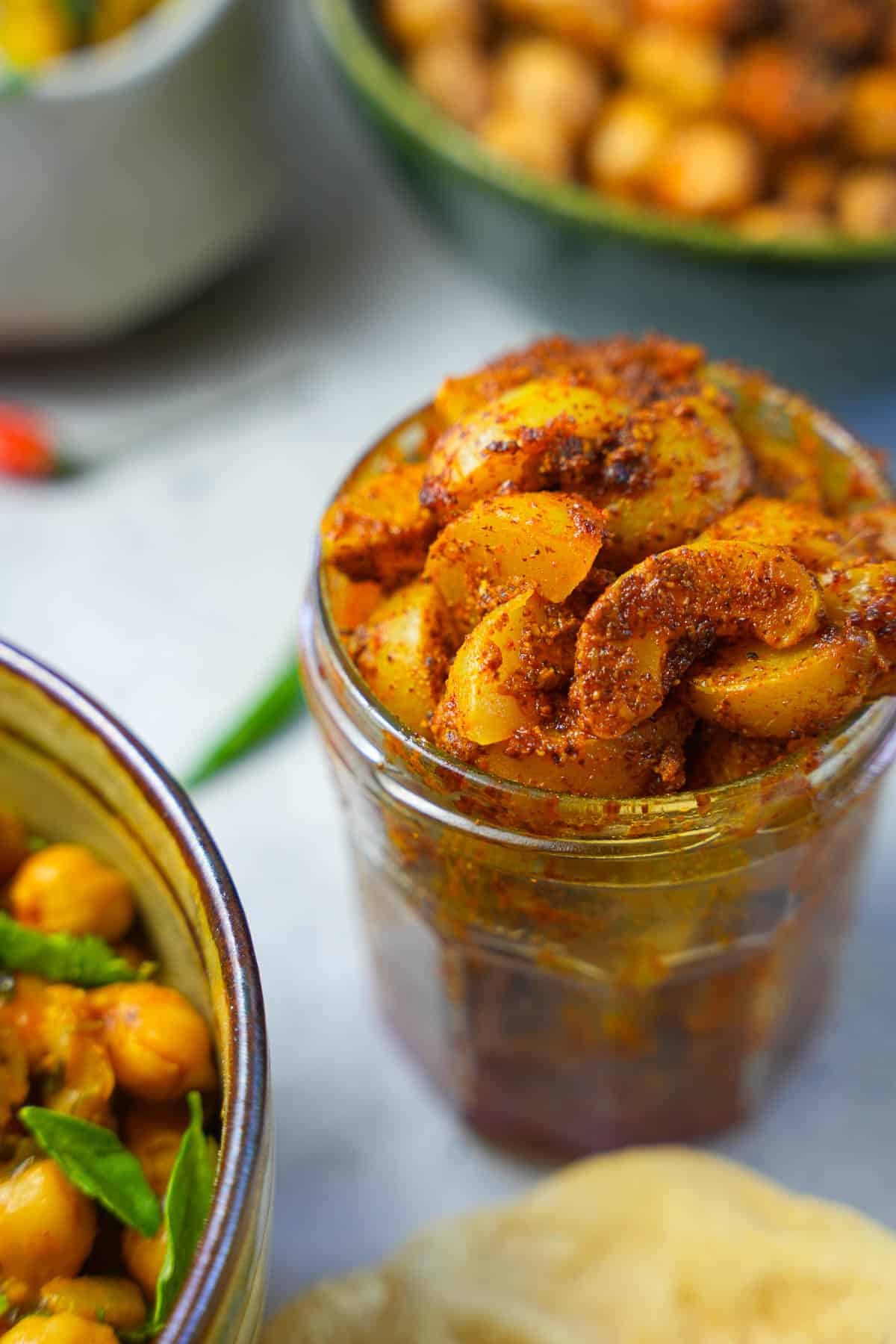
Yes, you can use frozen amla as a substitute for fresh amla in this recipe. Just ensure that the frozen amla is thawed and drained before proceeding with the pickling process.
When stored properly in airtight glass jars and refrigerated, this pickle can last for up to two or even three months without compromising its taste and quality.
Absolutely! You can adjust the spiciness by reducing the amount of Kashmiri red chili powder or by adding less spicy spices to the blend. Taste as you go and find the perfect balance that suits your palate.
Reusing the flavored oil from the pickle is a great opportunity for cooking other dishes. Once the pickle is finished, if any oil remains, just strain it through a fine mesh strainer and use it to add flavor to rice or dal.
Cool Before Mixing: Allow the amla to cool to room temperature before packing it into a jar and chilling it.
Refrigerate in Airtight Glass Jars: Transfer the pickled amla into sterilized, dry glass jars with an airtight lid. A mason jar is ideal, but you can get away with re-using a glass jar from jam or other store-bought food as long as you wash and then boil or steam the jars first.
For an optional extra layer of protection, fully cover the pickle with an extra layer of oil. The oil acts as a barrier against air and moisture, preventing mold growth and maintaining the pickle's quality.
✌️ See ya later, ‘frigerator
Place the sealed glass jars in the refrigerator to extend the shelf life. Keep the pickle refrigerated at all times, and use the pickle within two months.
🥄 Always use a clean and dry spoon to scoop the pickle from the jar. Avoid any contact with moist or dirty utensils to prevent contamination.
🔎 Periodically check the pickle for any signs of mold, discoloration, or off odors. If you notice any of these signs, compost the pickle immediately. It’s easier to make more pickles than to deal with a tummy ache!
✌️My favey dishes to serve with this pickle:
Say Hi on Social! 👋
Follow me on Instagram & Facebook for more recipes.
❤️Love this recipe? It helps me out greatly if you leave a 5-star 🌟🌟🌟🌟🌟rating in the recipe card below and maybe even leave me a lovey-dovey comment too!

amla ka achar (Instant Indian gooseberry pickle)
Equipment
Ingredients
- 250 grams fresh amla about 11 amla fruits
- 1 tablespoon mustard seeds
- ½ teaspoon cumin seeds
- 1 ½ teaspoons fenugreek seeds
- 2 teaspoons Kashmiri red chili powder
- ¼ teaspoon turmeric powder
- 3 tablespoons oil olive oil, canola, sunflower, or peanut oil
- 2 tablespoons lemon juice
- 1 teaspoon salt
Instructions
- Steam the fresh amla fruits in a steamer for about 10 minutes until they become soft and tender. Allow them to cool completely.
- Once cooled, gently split each amla fruit into six sections, discarding the seeds.
- In a dry pan, toast the mustard seeds, cumin seeds, and fenugreek seeds until they become aromatic. This intensifies the flavors of the spices.
- Using a spice grinder, blender or mortar and pestle, grind the toasted seeds along with the Kashmiri red chili powder, turmeric powder and salt into a coarse powder
- In a mixing bowl, combine the cooled, sectioned amla with the prepared spice blend.
- Add the chosen oil (olive, canola, sunflower, or peanut oil) to the bowl, coating the amla evenly with the fragrant spice-infused oil.
- Squeeze fresh lemon juice over the spiced amla mixture.
- Mix all the ingredients thoroughly, ensuring the amla sections are well-coated with the spices, oil, and lemon juice.
- Transfer the Amla ka Achar into clean, dry glass jars with airtight lids, to preserve it.
- Store the pickle under refrigeration, and use it within a couple of months.

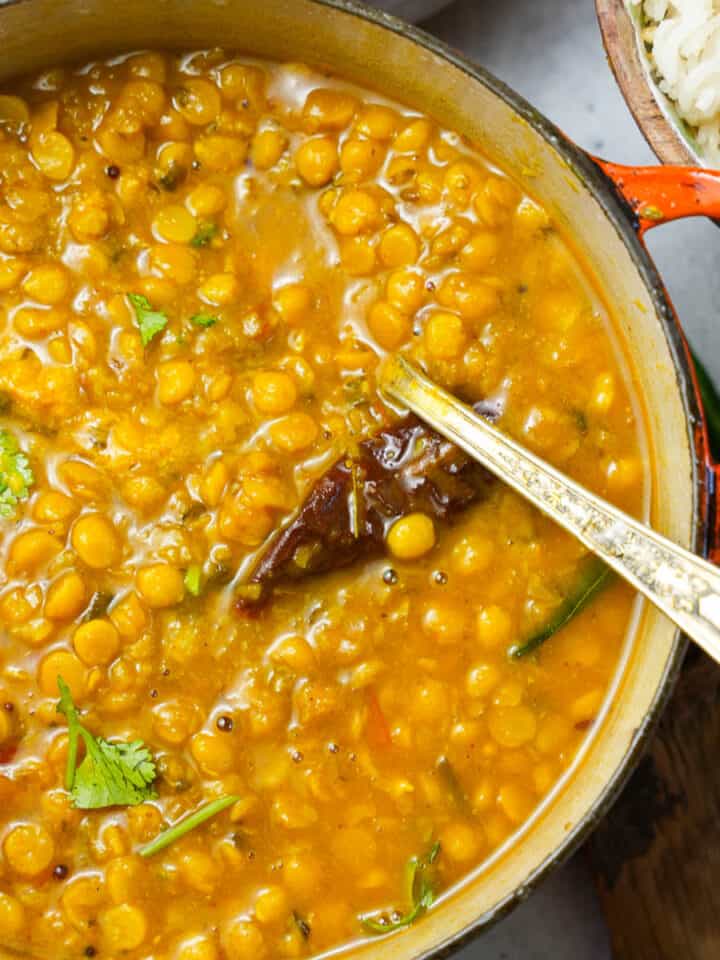
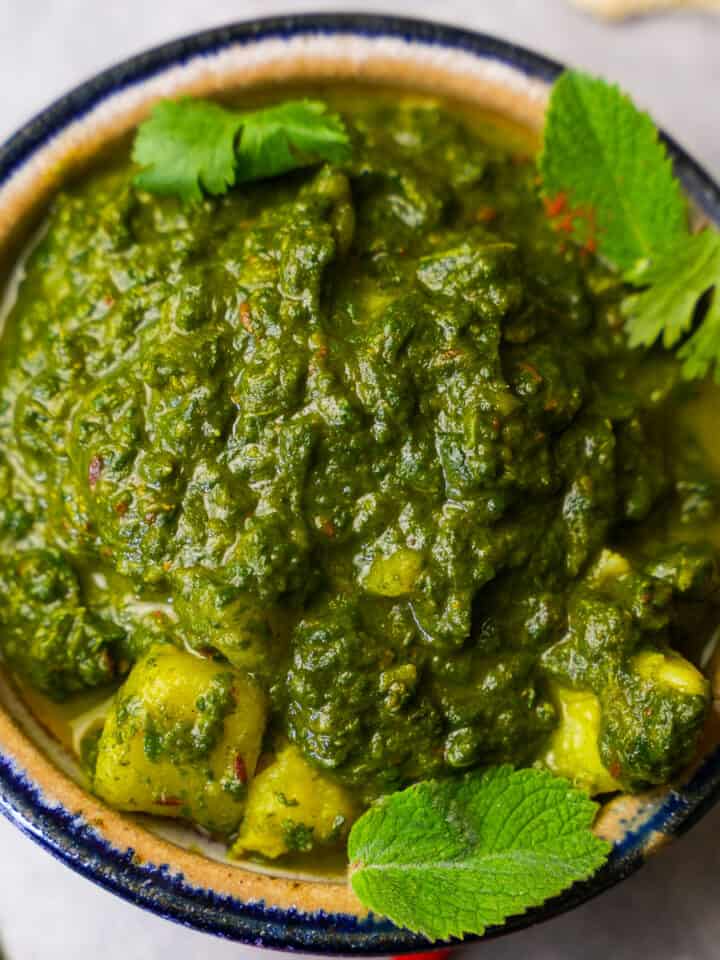
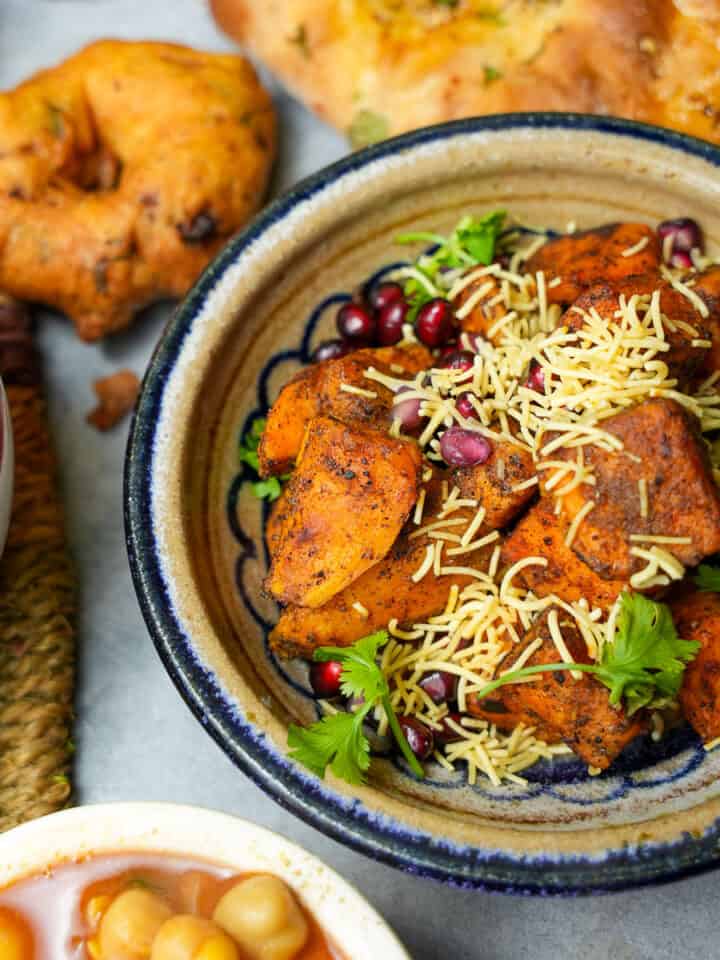
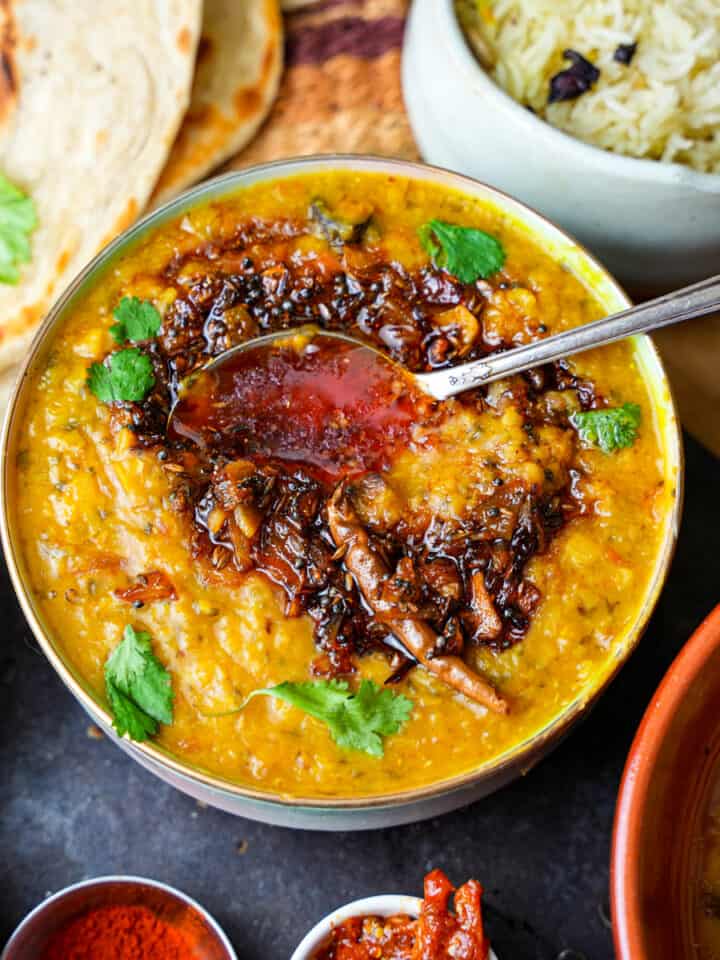
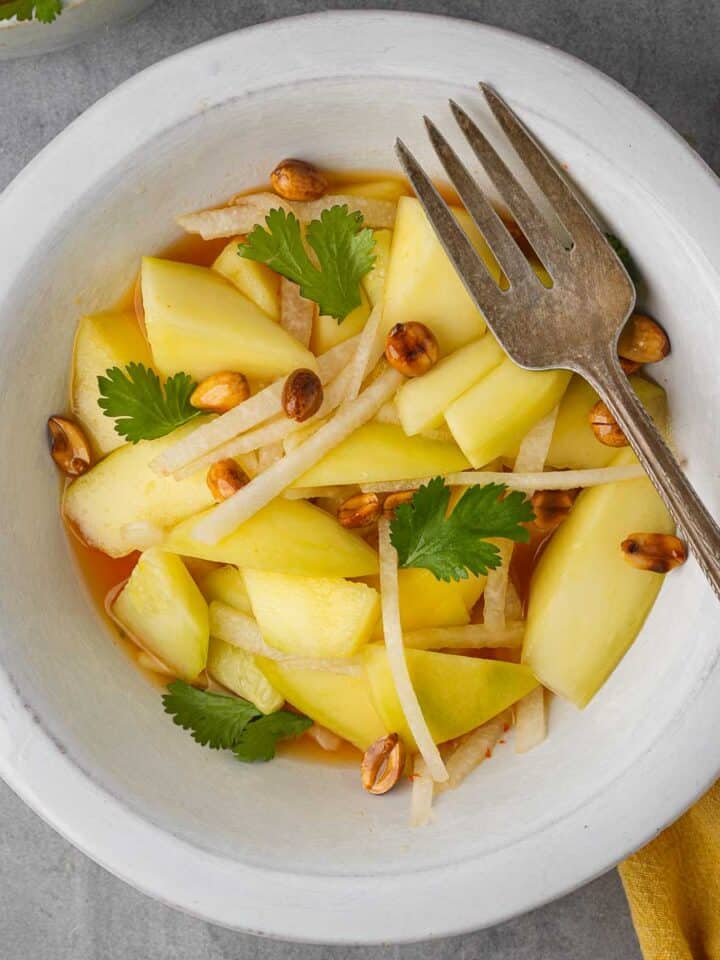
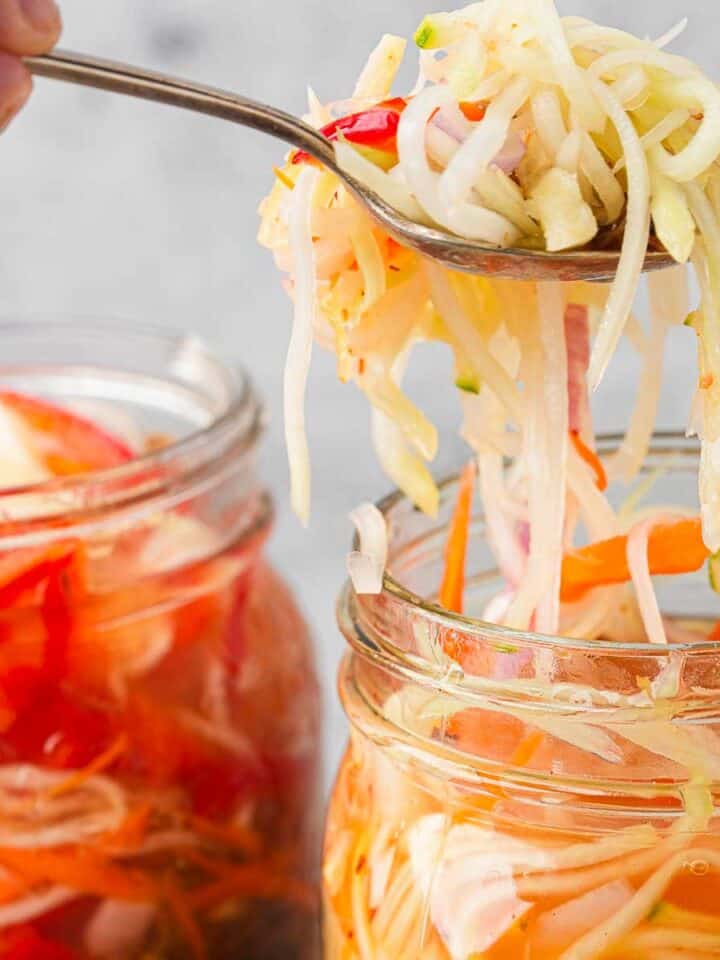
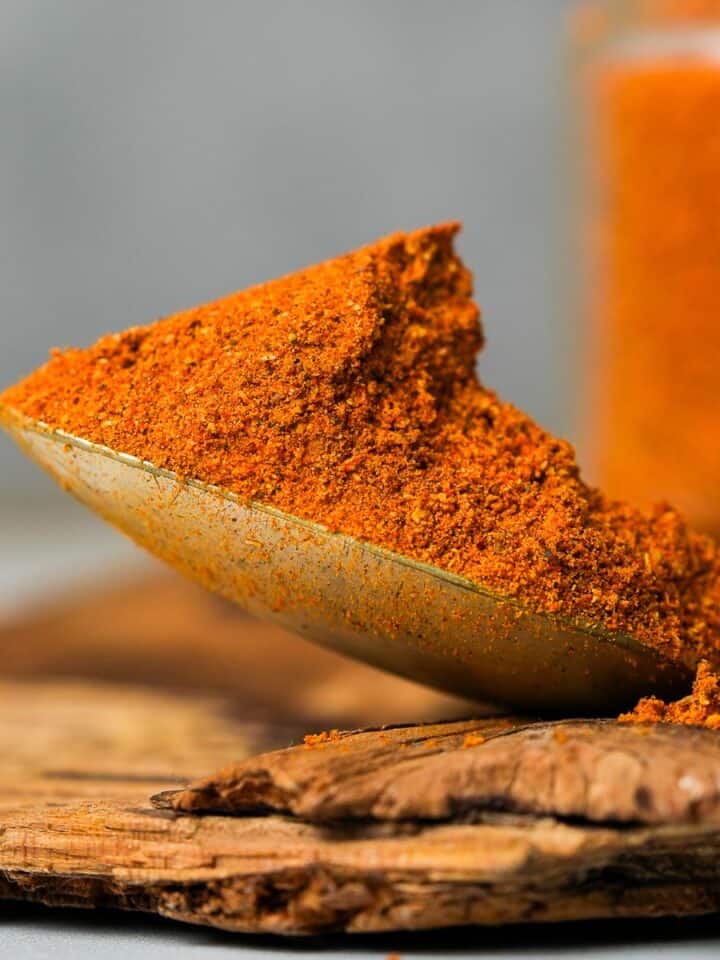


Leave a Reply